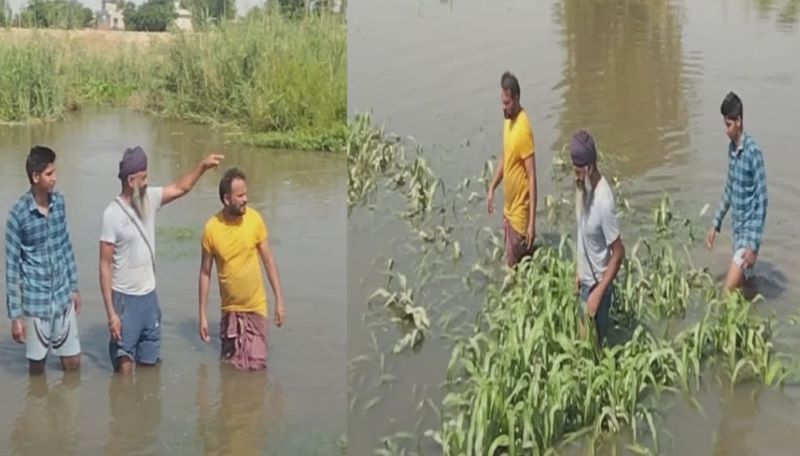 Punjab, long celebrated as the food bowl of India, owes its prosperity to its farmers. These men and women have fed the nation through decades of sacrifice, resilience, and sheer hard work. From the era of the Green Revolution, when Punjab’s fields turned golden with wheat and paddy, to today’s troubled times, the farmer has stood as the backbone of India’s agricultural economy. Yet, despite their immeasurable contribution, farmers in Punjab often find themselves facing not gratitude, but hostility and neglect from the very governments that rely on their labor.
Punjab, long celebrated as the food bowl of India, owes its prosperity to its farmers. These men and women have fed the nation through decades of sacrifice, resilience, and sheer hard work. From the era of the Green Revolution, when Punjab’s fields turned golden with wheat and paddy, to today’s troubled times, the farmer has stood as the backbone of India’s agricultural economy. Yet, despite their immeasurable contribution, farmers in Punjab often find themselves facing not gratitude, but hostility and neglect from the very governments that rely on their labor.
It has now been more than a year since Punjab Police launched large-scale operations to forcibly clear protest sites at Shambhu and Khanauri borders. These sites had become homes for thousands of farmers who camped there for months, demanding fair policies and better support for agriculture. The police crackdown was harsh—temporary shelters were torn down, tractors and vehicles were confiscated, and even prominent farmer leaders were arrested. In the chaos, material worth several lakhs belonging to farmers was stolen, and while FIRs were registered, justice remains elusive. Farmers continue to shuttle between police stations and administrative offices, but their pleas have been reduced to paperwork.
The government’s approach was not one of dialogue but of suppression. Prior to the operation, heavy security forces were deployed across the region, signaling confrontation. Farmer leaders such as Sarwan Singh Pandher and Jagjit Singh Dallewal—who had just returned from a meeting with Union Agriculture Minister Shivraj Singh Chouhan in Chandigarh—were arrested in Mohali, shocking the protest movement. Soon after, the Punjab government imposed internet blackouts at protest sites, further isolating the farmers from the outside world. Bulldozers were rolled in to demolish barricades at the Shambhu border, limiting movement and cutting off vital connections. Traffic had to be diverted as the entire region turned into a symbol of state heavy-handedness.
This episode cannot be viewed in isolation. It is part of a larger history of farmer struggles in Punjab. The 2020–21 farmers’ agitation against the three controversial farm laws is a defining example. For over a year, lakhs of farmers camped at Delhi’s borders, braving the bitter cold, scorching heat, and even the deadly second wave of COVID-19. The movement became one of the largest peaceful protests in independent India’s history. Farmers lost hundreds of lives to accidents, illness, and harsh weather, yet they stood firm until the government was forced to repeal the laws. That protest did not just highlight the economic plight of Punjab’s farmers but also exposed how quickly the state can turn its back on them when corporate interests or political compulsions are at stake.
Even earlier, Punjab farmers have struggled with issues of mounting debt, inadequate crop diversification, poor procurement policies, and the rising cost of inputs. Many have been pushed to despair, resulting in an alarming number of farmer suicides over the decades. Despite repeated promises by successive governments, structural reforms and relief have been minimal, leaving farmers trapped in a cycle of poverty and protest.
Today, the life of a Punjabi farmer is one of resilience against mounting odds. While they are the providers of food security for the nation, they are treated as agitators when they demand their due. The tearing down of shelters, the theft of their belongings, the arrest of their leaders, and the silencing of their voices through internet shutdowns all tell the same story—that the government views them as a problem to be managed rather than partners to be respected.
Yet, the spirit of Punjab’s farmers remains unbroken. Every crackdown only strengthens their resolve to fight for dignity, justice, and fairness. Their history shows that they will not back down easily, for their struggle is not just for themselves but for the survival of agriculture in India.
The real question now is whether the government will continue with coercion and suppression, or whether it will finally recognize the value of the farmer—treating him not as an enemy, but as the very backbone of the nation. Until that recognition comes, the pain and struggle of Punjab’s farmers will continue to be a harsh reminder of promises unfulfilled and justice denied.